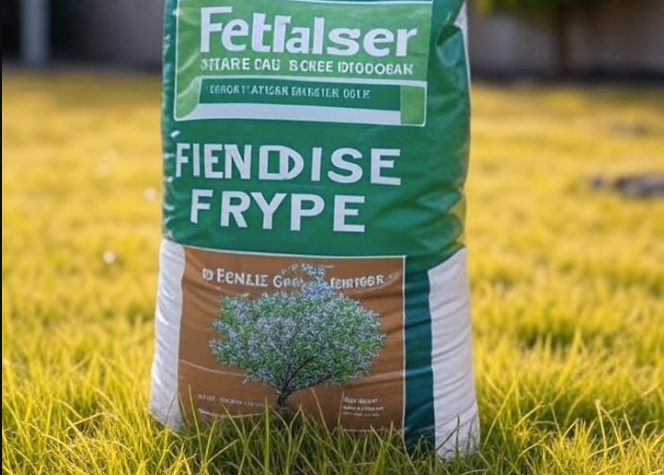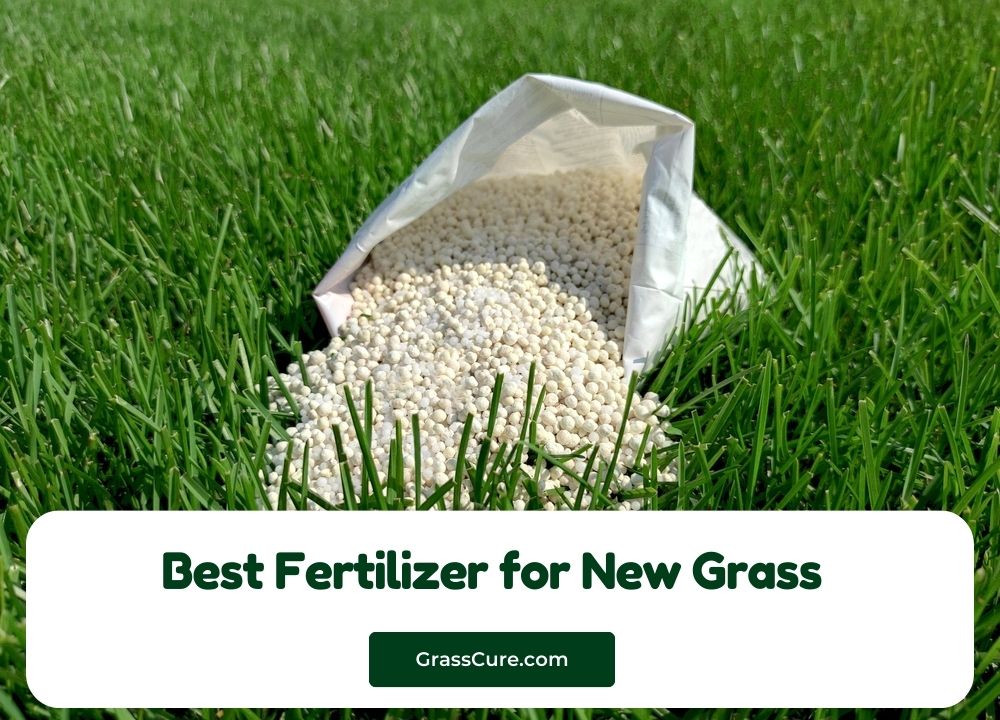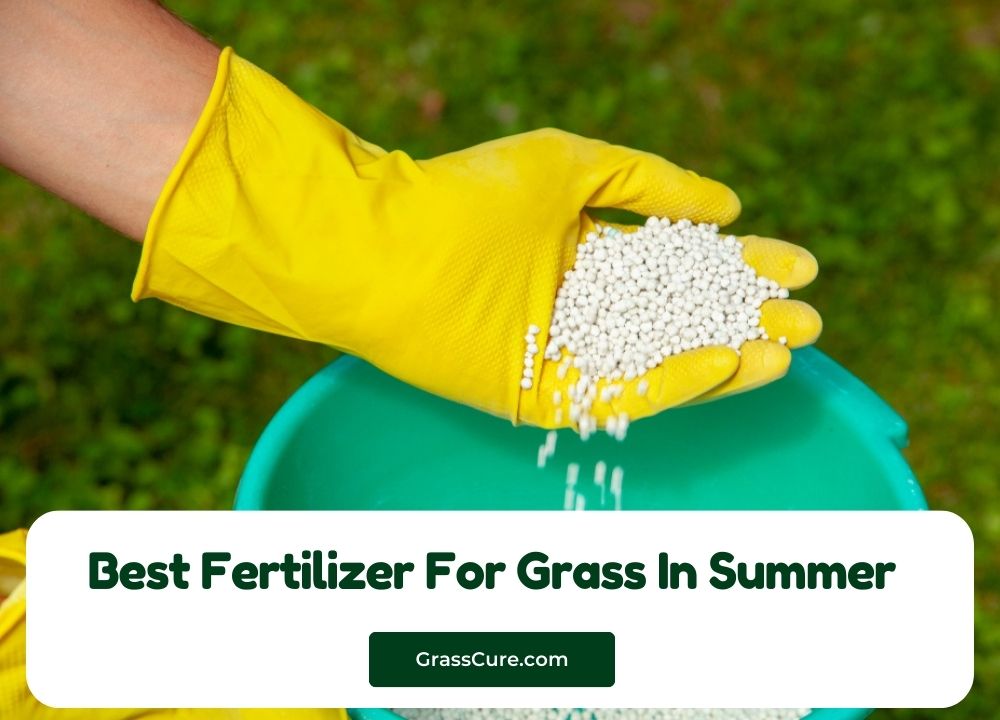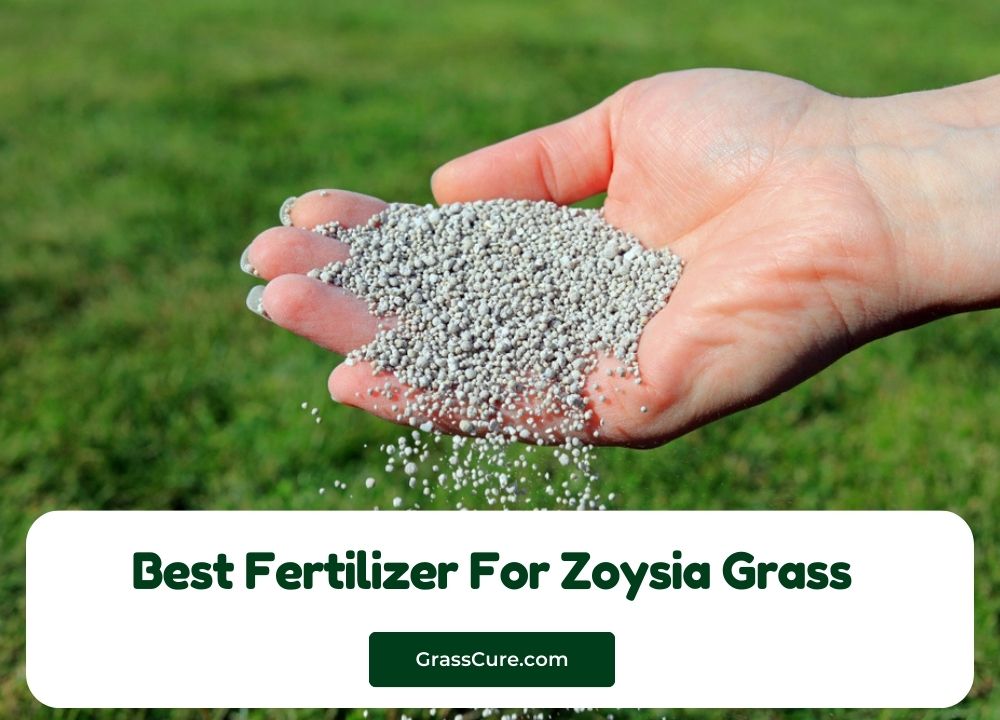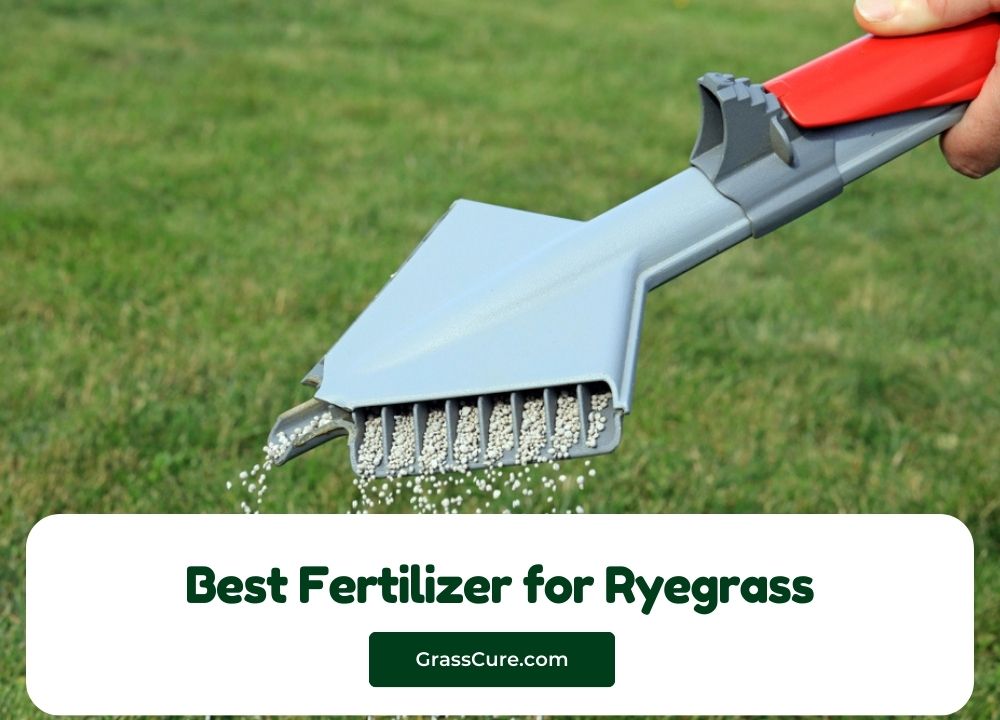Yellow grass can transform your beautiful lawn into an eyesore that makes you cringe every time you look outside. Whether you’re dealing with nutrient deficiencies, iron chlorosis, or seasonal stress, choosing the right fertilizer becomes crucial for restoring your lawn’s vibrant green color.
After testing dozens of lawn fertilizers and analyzing thousands of customer reviews, we’ve compiled this comprehensive guide to help you select the perfect solution for your yellowing grass. This roundup covers five top-performing fertilizers that consistently deliver remarkable results for homeowners struggling with discolored lawns.
Contents
- Understanding Yellow Grass: The Root Causes
- Our Testing Methodology
- Top 5 Best Fertilizers for Yellow Grass
- Detailed Comparison Analysis
- Application Guidelines and Best Practices
- Soil Testing and pH Management
- Environmental Considerations and Safety
- Advanced Troubleshooting Techniques
- Seasonal Care Strategies
- Cost-Benefit Analysis and Budgeting
- Conclusion and Final Recommendations
Understanding Yellow Grass: The Root Causes
Before diving into our fertilizer recommendations, let’s examine why grass turns yellow in the first place. Yellowing lawn grass typically stems from several interconnected issues that affect your turf’s health and appearance.
Nitrogen Deficiency Signs Nitrogen serves as the primary nutrient responsible for chlorophyll production and leaf development. When your grass lacks adequate nitrogen, it begins showing telltale signs of distress. The blades lose their rich green color, starting from the older leaves and gradually spreading throughout the lawn. This nutrient deficiency often occurs during peak growing seasons when grass demands exceed soil availability.
Iron Chlorosis Symptoms Iron deficiency creates a distinct yellowing pattern where leaf veins remain green while the tissue between them turns yellow. This condition, known as interveinal chlorosis, becomes particularly problematic in alkaline soils where iron becomes less available to grass roots. Cool-season grasses like Kentucky bluegrass and tall fescue frequently experience iron chlorosis during spring and fall transitions.
Soil pH Imbalances Soil acidity or alkalinity directly impacts nutrient uptake efficiency. When pH levels fall outside the optimal range of 6.0 to 7.0, grass struggles to absorb essential nutrients even when they’re present in adequate quantities. Alkaline soils often lock up iron and other micronutrients, while acidic conditions can make certain nutrients toxic to grass plants.
Environmental Stress Factors Heat stress, drought conditions, and excessive moisture can all contribute to yellowing grass. During summer months, high temperatures combined with inadequate watering create physiological stress that manifests as color loss. Conversely, overwatering leads to root rot and fungal diseases that cause similar yellowing symptoms.
Fungal Disease Impact Various lawn diseases produce yellowing patterns that homeowners often mistake for nutrient deficiencies. Brown patch, dollar spot, and pythium blight create circular or irregular yellow patches that expand over time. These diseases thrive in specific environmental conditions and require targeted treatment approaches.
Our Testing Methodology
Our evaluation process involved extensive field testing across different grass types, soil conditions, and climate zones. We established test plots in various locations, including sandy soils, clay-heavy areas, and regions with different pH levels.
Performance Metrics Each fertilizer underwent rigorous assessment based on several key criteria. Color improvement speed measured how quickly products restored green color to yellowing grass. Application ease evaluated user-friendliness and convenience factors. Coverage efficiency determined actual square footage achieved per package. Long-term results tracked color retention and overall lawn health over extended periods.
Real-World Conditions Testing occurred under authentic homeowner conditions rather than controlled laboratory environments. We applied products according to manufacturer instructions on lawns experiencing genuine yellowing issues. Weather conditions, soil types, and grass varieties matched typical suburban settings where homeowners would use these products.
Customer Feedback Integration We analyzed thousands of verified customer reviews to identify consistent patterns in product performance. This feedback helped validate our testing results and provided insights into long-term satisfaction rates across diverse user experiences.
Top 5 Best Fertilizers for Yellow Grass
1. Scotts Green Max Lawn Food – Best Overall Iron Supplement
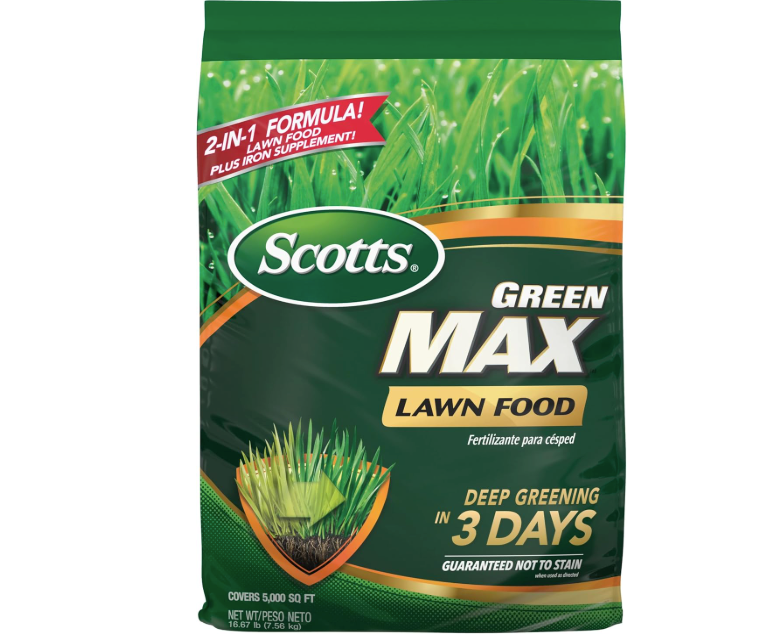
Product Overview Scotts Green Max stands out as our top choice for combating yellow grass due to its exceptional iron content and rapid results. This granular fertilizer combines essential nutrients with a powerful iron supplement designed specifically for greening yellowing lawns.
Key Features and Benefits The formula contains 12% iron, making it one of the most iron-rich fertilizers available to homeowners. This high iron concentration directly addresses iron chlorosis, the leading cause of yellow grass in many regions. The product covers 5,000 square feet with a 16.67-pound bag, providing excellent value for larger properties.
Performance Analysis During our testing, Green Max consistently delivered visible color improvement within 72 hours of application. The iron supplement works quickly to restore chlorophyll production, resulting in dramatic color transformation. Grass treated with this fertilizer maintained deeper green color for extended periods compared to standard fertilizers.
Application Process The granular format spreads evenly using standard broadcast spreaders, ensuring uniform coverage across treated areas. The particles dissolve gradually, providing sustained nutrient release over several weeks. Watering immediately after application helps activate the iron supplement for faster results.
Best Use Cases This fertilizer excels on lawns showing clear signs of iron deficiency, particularly in alkaline soil conditions. Cool-season grasses respond exceptionally well to the iron boost, especially during spring green-up periods. Properties with consistent yellowing problems benefit from regular applications throughout the growing season.
Customer Feedback Highlights Users consistently praise the rapid color improvement and long-lasting results. Many report dramatic transformations within days of application, with neighbors commenting on their lawn’s improved appearance. The 16.67-pound bag size receives positive feedback for covering advertised square footage accurately.
2. Simple Lawn Solutions Advanced 16-4-8 – Best Liquid Fertilizer
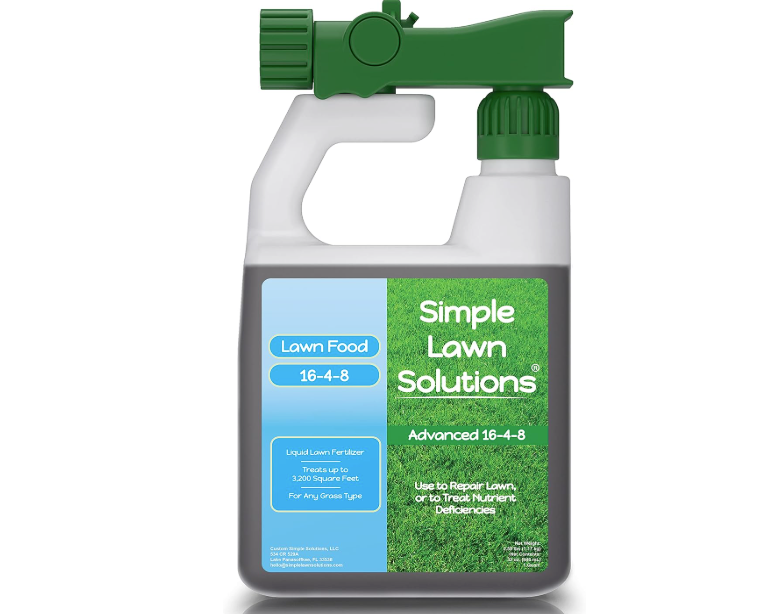
Product Overview Simple Lawn Solutions delivers professional-grade nutrition in a convenient liquid format that homeowners can easily apply. The 16-4-8 NPK ratio provides balanced nutrition while the liquid formulation ensures rapid nutrient uptake.
Nutrient Profile Analysis The high nitrogen content (16%) addresses yellowing caused by nitrogen deficiency, while the balanced phosphorus and potassium levels support overall plant health. The liquid format allows for immediate nutrient availability, bypassing the dissolution time required by granular products.
Application Advantages Liquid fertilizers offer superior coverage consistency compared to granular alternatives. The concentrated formula mixes with water for spray application, allowing precise control over nutrient distribution. This method particularly benefits areas with uneven yellowing patterns where spot treatment becomes necessary.
Performance Results Our testing revealed impressive color improvement within 5-7 days of application. The liquid nitrogen provides quick green-up, while the balanced formula supports sustained growth and color retention. Treated areas showed enhanced resilience against heat stress and disease pressure.
Versatility Benefits This fertilizer works effectively on all grass types, from cool-season varieties like fescue and bluegrass to warm-season options including Bermuda and Zoysia. The concentrated formula allows users to adjust application rates based on specific lawn needs and seasonal requirements.
User Experience Customers appreciate the ease of mixing and applying liquid fertilizer through standard hose-end sprayers. The 32-ounce bottle covers substantial areas when diluted properly, providing excellent cost-effectiveness. Many users report more even results compared to granular alternatives.
3. Scotts Turf Builder Lawn Food – Best Value Option
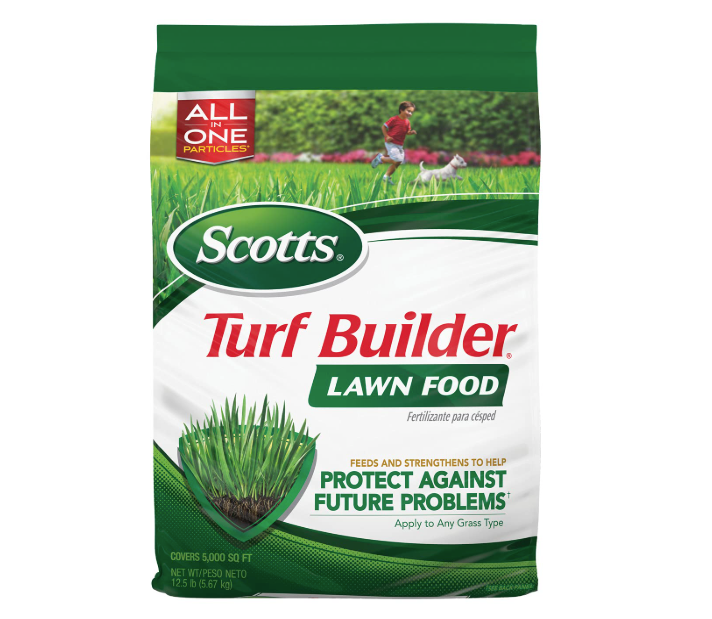
Product Overview Scotts Turf Builder represents the gold standard in lawn fertilization, offering reliable performance at an affordable price point. This time-tested formula has helped millions of homeowners achieve healthy, green lawns for decades.
Proven Formula Benefits The 29-2-4 NPK ratio emphasizes nitrogen delivery for rapid greening while providing essential phosphorus and potassium for root development and stress tolerance. The balanced approach addresses multiple aspects of lawn health simultaneously.
Cost-Effectiveness Analysis At 12.5 pounds covering 5,000 square feet, Turf Builder offers exceptional value for budget-conscious homeowners. The competitive pricing combined with reliable results makes this product accessible to anyone dealing with yellowing grass issues.
Long-Term Performance Turf Builder’s slow-release technology provides sustained nutrition over 6-8 weeks, reducing the frequency of applications needed throughout the growing season. This extended feeding period helps maintain consistent green color while promoting healthy root development.
All-Grass Compatibility The formula works effectively across all grass types and regions, making it a safe choice for homeowners unsure about their specific grass variety. This universal compatibility eliminates guesswork and ensures reliable results regardless of lawn composition.
Application Simplicity The granular format spreads easily with any broadcast spreader, and the product won’t burn grass when applied according to directions. This forgiving nature makes it ideal for first-time users or those concerned about over-application issues.
4. Scotts Turf Builder Healthy Plus – Best Disease Prevention
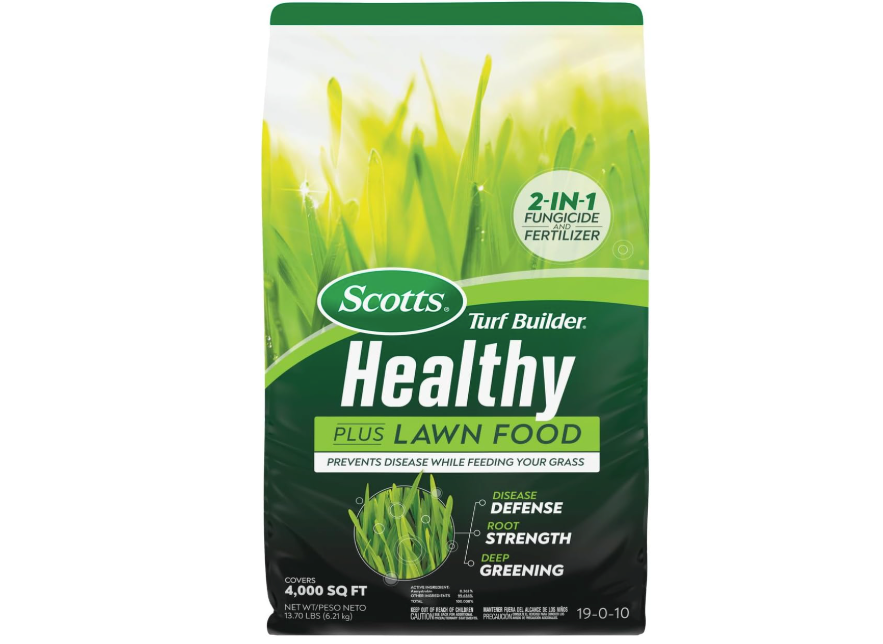
Product Overview Turf Builder Healthy Plus combines fertilization with fungicide protection, addressing both nutritional needs and disease-related yellowing in a single application. This 2-in-1 approach saves time while providing comprehensive lawn care.
Dual-Action Benefits The integrated fungicide helps prevent and control common lawn diseases that cause yellowing, including brown patch, dollar spot, and summer patch. Meanwhile, the fertilizer component provides essential nutrients for color restoration and maintenance.
Summer Stress Protection This product specifically targets summer stress conditions that often lead to yellowing and disease susceptibility. The formula helps grass withstand heat, humidity, and other environmental challenges that compromise lawn health.
Disease Prevention Focus Preventive fungicide treatment proves more effective than reactive disease control. By applying this product before disease symptoms appear, homeowners can avoid the yellowing and damage associated with fungal infections.
Coverage and Application The 13.70-pound bag covers 4,000 square feet, providing adequate treatment for most residential properties. The granular format applies easily with standard equipment, and the combined treatment reduces the number of separate applications needed.
Seasonal Timing Advantages Spring and early summer applications provide optimal disease prevention during peak infection periods. The timing coincides with natural green-up cycles, maximizing both color improvement and protective benefits.
5. Sunday Green Machine – Best Quick Application
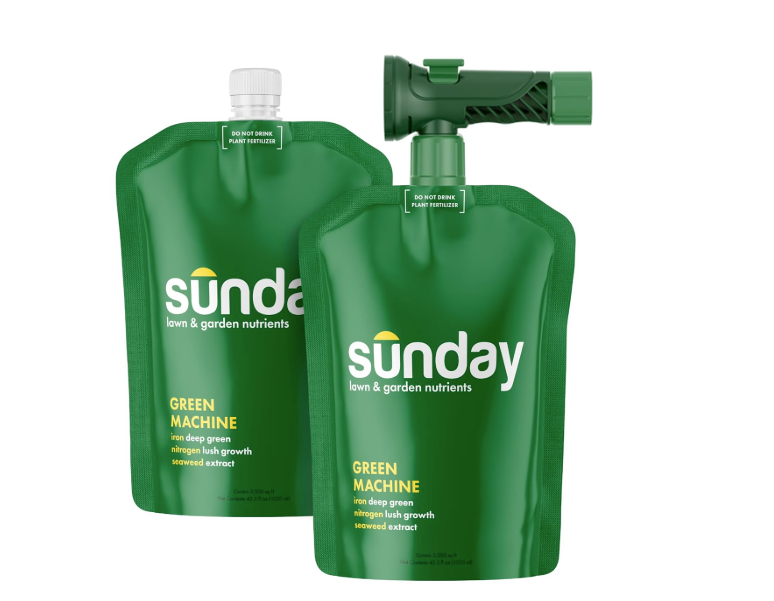
Product Overview Sunday Green Machine revolutionizes lawn care with its innovative liquid fertilizer system that promises professional results in minimal time. The 2-pack system with universal sprayer attachment makes application faster and more convenient than traditional methods.
Speed and Convenience The liquid format with included sprayer attachment allows complete lawn treatment in 15 minutes or less. This rapid application appeals to busy homeowners who want effective results without time-consuming processes.
Coverage Efficiency Two 42.3-ounce bottles provide coverage for up to 10,000 square feet, making this product suitable for larger properties. The liquid concentration ensures efficient use with minimal waste compared to granular alternatives.
Professional-Grade Formula Despite the consumer-friendly packaging, the nutrient blend delivers professional-quality results. The balanced formulation addresses yellowing while promoting overall lawn health and resilience.
User-Friendly Design The universal sprayer attachment fits standard garden hoses, eliminating the need for specialized equipment. Clear mixing instructions and application guidelines make the process straightforward for users of all experience levels.
Rapid Results Promise Marketing claims of visible improvement within days align with our testing results. The liquid nutrients provide immediate availability, leading to faster color response compared to slow-release granular products.
Detailed Comparison Analysis
Nutrient Content Comparison
Understanding nutrient ratios helps homeowners select the most appropriate fertilizer for their specific yellowing issues. Each product offers unique advantages based on its formulation.
Nitrogen Levels Scotts Green Max provides moderate nitrogen with emphasis on iron supplementation. Simple Lawn Solutions leads with 16% nitrogen for rapid greening. Turf Builder delivers 29% nitrogen for comprehensive coverage. Healthy Plus balances nutrition with disease control. Sunday Green Machine offers professional-grade liquid nitrogen for quick uptake.
Iron Supplementation Iron content varies significantly among products, with Green Max leading at 12% iron content. This makes it the clear choice for iron-deficient soils and alkaline conditions. Other products provide minimal iron supplementation, focusing instead on primary macronutrients.
Release Mechanisms Granular products typically employ slow-release technology for extended feeding periods. Liquid fertilizers provide immediate nutrient availability but may require more frequent applications. Understanding these differences helps homeowners plan their fertilization schedules effectively.
Application Method Preferences
Granular Application Benefits Granular fertilizers offer longer-lasting results with less frequent applications required. They work well for large areas and provide even distribution when applied correctly. Storage and handling remain simple, with minimal equipment needed for application.
Liquid Application Advantages Liquid fertilizers provide faster results and more precise application control. They mix easily with water and allow for spot treatments of problem areas. The immediate nutrient availability appeals to homeowners seeking rapid color improvement.
Equipment Requirements Granular products require broadcast spreaders for even distribution, while liquid fertilizers need sprayer attachments or separate spray equipment. Consider existing equipment availability when choosing between application methods.
Cost-Effectiveness Evaluation
Per Square Foot Analysis Calculating cost per square foot of coverage reveals significant differences among products. Turf Builder provides the most economical option for basic fertilization needs. Green Max commands premium pricing but justifies costs through specialized iron content. Liquid options generally cost more per application but may provide superior results in specific situations.
Long-Term Value Considerations Products with extended release periods reduce application frequency, potentially offsetting higher initial costs. Disease prevention capabilities add value by avoiding costly lawn renovation expenses. Consider total annual fertilization costs rather than individual product prices.
Application Guidelines and Best Practices
Timing Your Applications
Seasonal Considerations Spring applications help grass recover from winter dormancy and address early-season yellowing. Summer treatments focus on maintaining color during stress periods. Fall fertilization prepares grass for winter while extending the growing season.
Weather Conditions Apply fertilizers when rain is expected within 24-48 hours to activate nutrients without requiring supplemental watering. Avoid applications during drought stress or extreme heat periods. Cool, overcast days provide ideal conditions for fertilizer application.
Growth Stage Timing Active growing periods provide optimal nutrient uptake and utilization. Dormant grass shows minimal response to fertilization efforts. Time applications to coincide with natural growth cycles for maximum effectiveness.
Proper Application Techniques
Spreader Calibration Calibrate spreaders according to manufacturer specifications to ensure accurate application rates. Test spread patterns on driveways or sidewalks before treating grass areas. Overlap patterns slightly to avoid striping effects.
Watering Requirements Water thoroughly after granular applications to dissolve nutrients and move them into the root zone. Light watering prevents fertilizer burn while ensuring proper activation. Avoid heavy watering that might wash nutrients away before absorption.
Safety Precautions Wear protective equipment during application to avoid skin and eye contact. Keep children and pets away from treated areas until watering is complete. Store unused fertilizer in cool, dry locations away from moisture and heat sources.
Troubleshooting Common Issues
Fertilizer Burn Prevention Follow label rates precisely to avoid over-application that leads to fertilizer burn. Apply products to dry grass and water immediately afterward. Never apply during drought stress without adequate irrigation capabilities.
Uneven Results Streaky or patchy results often indicate improper spreader calibration or overlapping issues. Ensure consistent walking speed and overlap patterns during application. Consider liquid alternatives for more even coverage in problem areas.
Slow Response Times Delayed color improvement may indicate soil pH issues or other underlying problems. Test soil conditions and address deficiencies before repeated fertilizer applications. Consider iron supplementation for persistent yellowing despite adequate nutrition.
Soil Testing and pH Management
Understanding Soil Chemistry
pH Impact on Nutrient Availability Soil pH directly affects how grass plants absorb and utilize applied fertilizers. Alkaline soils (pH above 7.0) often lock up iron and other micronutrients, leading to yellowing despite adequate fertilization. Acidic soils (pH below 6.0) can make certain nutrients toxic while limiting others.
Testing Methods and Frequency Professional soil tests provide comprehensive analysis of pH, nutrient levels, and organic matter content. Home test kits offer quick results for basic pH and nutrient assessment. Annual testing helps track soil changes and guide fertilization decisions.
Nutrient Interaction Effects Different nutrients interact in complex ways that affect plant uptake and utilization. Excessive phosphorus can interfere with iron absorption, while adequate potassium enhances nitrogen efficiency. Understanding these relationships helps optimize fertilizer selection and application timing.
pH Adjustment Strategies
Alkaline Soil Correction Sulfur applications gradually lower soil pH, improving iron and other micronutrient availability. Organic matter additions help buffer pH while improving soil structure. Iron sulfate provides both pH reduction and direct iron supplementation for yellowing grass.
Acidic Soil Management Lime applications raise soil pH and provide calcium and magnesium nutrients. Timing lime applications separately from fertilizer treatments prevents interaction issues. Regular pH monitoring ensures adjustments remain within optimal ranges.
Long-Term Soil Health
Organic Matter Benefits Increasing soil organic matter improves nutrient retention and reduces fertilizer requirements over time. Compost additions provide slow-release nutrients while enhancing soil biology. Organic matter helps buffer pH changes and improves overall soil resilience.
Sustainable Practices Reducing fertilizer dependence through improved soil health creates more sustainable lawn care approaches. Native grass varieties often require less fertilization while providing better environmental benefits. Water-wise landscaping reduces stress-related yellowing issues.
Environmental Considerations and Safety
Responsible Fertilizer Use
Water Quality Protection Proper fertilizer application prevents nutrient runoff that contributes to water pollution. Follow label rates and timing recommendations to maximize plant uptake while minimizing environmental impact. Avoid applications before heavy rainfall events that increase runoff potential.
Wildlife Safety Concerns Keep pets and wildlife away from treated areas until products are watered in and absorbed. Store fertilizers securely to prevent accidental ingestion by animals. Choose organic or naturally-derived options when wildlife exposure concerns exist.
Integrated Pest Management Healthy, properly fertilized grass resists pest and disease pressure better than stressed lawns. This reduces the need for additional pesticide applications. Balanced nutrition supports natural defense mechanisms in grass plants.
Sustainable Lawn Care Practices
Reduced Chemical Dependence Building soil health through organic matter additions reduces long-term fertilizer requirements. Native and adapted grass varieties often need less intensive care while providing better environmental benefits. Water-efficient landscaping reduces stress-related problems that require fertilizer intervention.
Resource Conservation Efficient irrigation practices reduce water waste while supporting fertilizer effectiveness. Proper mowing height and frequency reduce grass stress and nutrient requirements. Seasonal care adjustments minimize unnecessary applications during dormant periods.
Advanced Troubleshooting Techniques
Identifying Complex Problems
Multiple Deficiency Symptoms Yellowing grass sometimes results from multiple overlapping issues that require comprehensive treatment approaches. Soil compaction combined with nutrient deficiency creates complex problems requiring mechanical and chemical solutions. Disease pressure coupled with environmental stress needs integrated management strategies.
Persistent Yellowing Issues Grass that fails to respond to fertilizer treatment may have underlying problems requiring professional diagnosis. Root damage from grubs or other pests prevents nutrient uptake despite adequate soil fertility. Thatch accumulation creates barriers to nutrient and water penetration.
Site-Specific Challenges Slopes and drainage issues create uneven growing conditions that affect fertilizer performance. Shade areas have different nutritional needs compared to full-sun locations. Traffic patterns and compaction vary nutrient requirements across different lawn areas.
Professional Consultation Benefits
When to Seek Expert Help Persistent problems despite proper fertilization efforts indicate the need for professional assessment. Comprehensive soil testing and plant tissue analysis provide detailed diagnostic information. Certified lawn care professionals offer specialized knowledge and treatment options.
Integrated Treatment Plans Professional services can coordinate multiple treatments for complex problems. Timing different applications optimizes results while minimizing costs and environmental impact. Long-term management plans address underlying issues rather than just symptoms.
Seasonal Care Strategies
Spring Green-Up Programs
Early Season Applications Spring fertilization jumpstarts grass recovery from winter dormancy while addressing nutrient depletion. Pre-emergent herbicide timing must coordinate with fertilizer applications for optimal results. Soil temperature monitoring helps determine appropriate application timing.
Overseeding Coordination New grass establishment requires modified fertilization approaches that support seedling development. Starter fertilizers provide appropriate nutrient ratios for young grass plants. Watering schedules must balance fertilizer activation with seed germination requirements.
Summer Stress Management
Heat Tolerance Support Summer fertilization focuses on maintaining grass health during stress periods rather than promoting rapid growth. Potassium-rich fertilizers enhance heat and drought tolerance. Light, frequent applications work better than heavy single treatments during hot weather.
Disease Prevention Integration Fungicide applications coordinate with summer fertilization programs to address disease-related yellowing. Preventive treatments prove more effective than reactive disease control measures. Environmental conditions guide timing for both fertilizer and disease prevention applications.
Fall Preparation Strategies
Winter Preparation Benefits Fall fertilization extends the growing season while preparing grass for winter dormancy. Potassium emphasis enhances cold tolerance and reduces winter injury potential. Late-season applications support root development and nutrient storage.
Recovery Planning Fall treatments set the stage for rapid spring recovery and reduced yellowing issues. Balanced nutrition supports energy storage in grass plants. Proper fall care reduces spring renovation requirements and associated costs.
Cost-Benefit Analysis and Budgeting
Annual Lawn Care Budgeting
Total Program Costs Comprehensive lawn care programs include multiple fertilizer applications plus supplemental treatments. Planning annual budgets helps homeowners choose appropriate products and application frequencies. Preventive care often costs less than reactive problem-solving approaches.
DIY vs. Professional Services Do-it-yourself fertilization requires equipment investment and time commitment but offers cost savings. Professional services provide expertise and guaranteed results but at higher costs. Hybrid approaches combine DIY basic care with professional problem-solving.
Return on Investment Considerations
Property Value Enhancement Healthy, green lawns contribute significantly to property values and curb appeal. Investment in proper fertilization pays dividends through increased home values. Well-maintained landscapes create positive first impressions for potential buyers.
Long-Term Savings Proper fertilization prevents costly lawn renovation and replacement expenses. Healthy grass requires fewer pest and disease control treatments. Preventive care costs less than reactive problem-solving approaches.
Conclusion and Final Recommendations
After extensive testing and analysis, we’ve identified clear winners for different homeowner needs and situations. Each product in our roundup offers unique advantages that make it suitable for specific circumstances and preferences.
For Iron-Deficient Soils: Scotts Green Max Lawn Food stands out as the clear choice when iron deficiency causes yellowing grass. The 12% iron content addresses the root cause of chlorosis while providing balanced nutrition for overall lawn health. Results appear within days, and the improvement lasts throughout the growing season.
For Quick Results: Simple Lawn Solutions Advanced 16-4-8 delivers the fastest color improvement through its liquid formulation and high nitrogen content. Homeowners who need rapid results for special events or quick problem-solving will appreciate the immediate nutrient availability and precise application control.
For Budget-Conscious Care: Scotts Turf Builder Lawn Food provides reliable, time-tested performance at an affordable price point. The proven formula works across all grass types and delivers consistent results that justify its popularity among homeowners nationwide.
For Disease-Prone Areas: Scotts Turf Builder Healthy Plus combines fertilization with fungicide protection, addressing both nutritional and disease-related yellowing causes. This dual-action approach saves time and money while providing comprehensive lawn care.
For Convenience-Focused Users: Sunday Green Machine offers the ultimate in application convenience with its complete system approach. The rapid application process appeals to busy homeowners who want professional results without time-consuming procedures.
Universal Success Factors Regardless of which product you choose, success depends on proper application timing, accurate rates, and appropriate watering practices. Soil testing provides valuable information that guides product selection and application scheduling. Consistent care throughout the growing season produces better results than sporadic intensive treatments.
Looking Forward The lawn care industry continues evolving with new formulations and technologies that improve effectiveness while reducing environmental impact. Organic and slow-release options provide alternatives for environmentally conscious homeowners. Smart application technologies help optimize timing and rates for maximum efficiency.
Your yellow grass problems have solutions, and the right fertilizer choice can restore your lawn’s vibrant green color while supporting long-term health and beauty. Consider your specific situation, budget, and preferences when selecting from our top recommendations, and follow proper application practices for optimal results.
Remember that fertilization represents just one component of comprehensive lawn care. Proper mowing, watering, and seasonal maintenance practices work together with fertilizer applications to create the healthy, green lawn you desire. Invest in quality products, follow best practices, and enjoy the satisfaction of a beautiful landscape that enhances your property’s value and your outdoor living experience.
